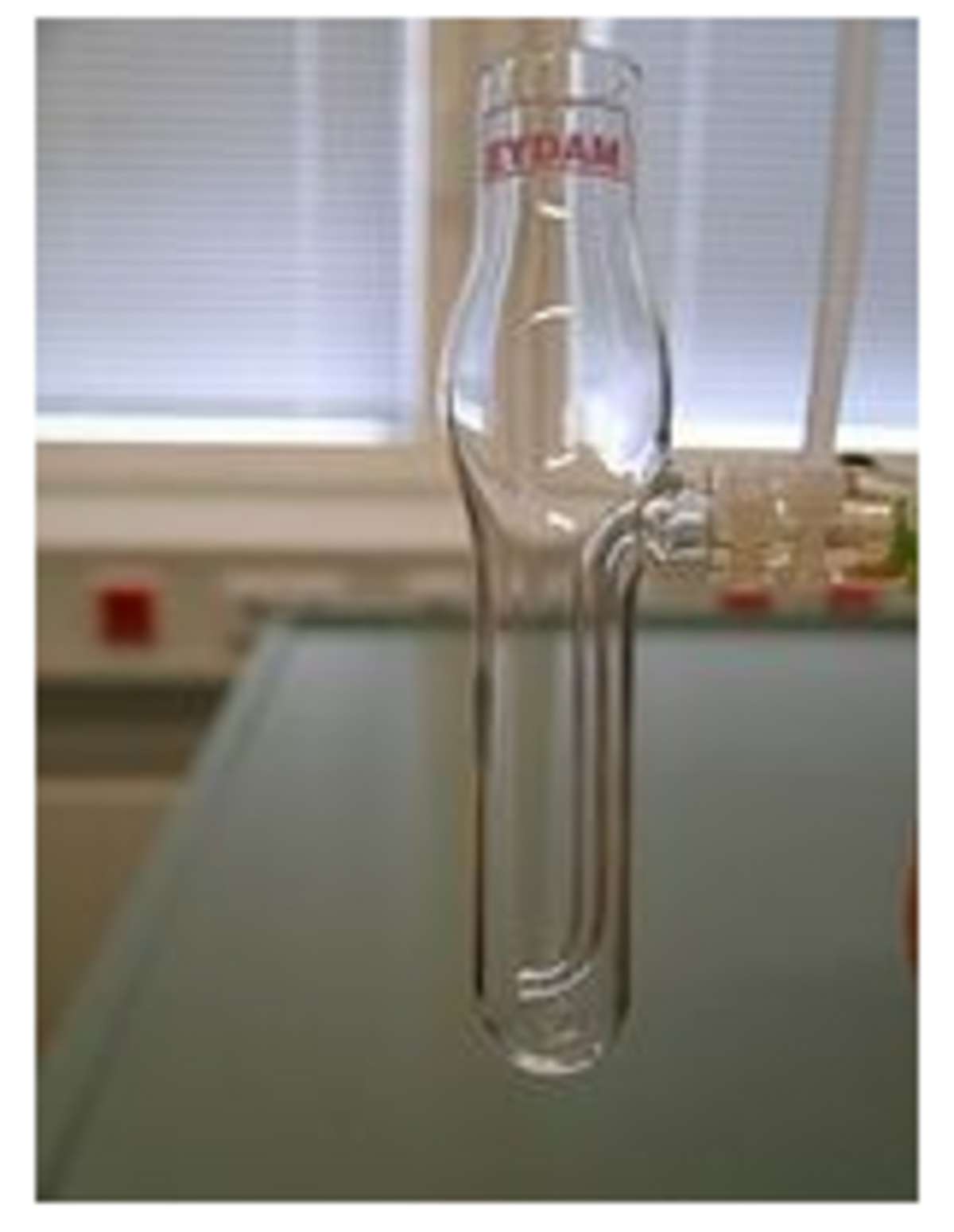APPARATUS:
- Eppendorfpipettes (100-1000 µl und 1-5 cm3)
- Titration vessel after G. Pavlova
- Titration unit with dark glass bottle and magnetic stirrer
- Various bottles to store the reagents
REAGENTS:
Indicator:
1.) 32 mg Methyl Red (or 37 mg of the sodium salt of Methyl Red) are mixed with 1.19 cm3 NaOH-solution (0.1 M) and dissolved in 80 cm3 Ethanol (96%).
2.) 10 mg Methylene Blue are dissolved in 10 cm3 Ethanol (96%).
4.8 cm3 of solution 2.) and 80 cm3 of solution 1.) are mixed to obtain a greenish-brown solution.
Titration solution: 0.02M HCl (By dilution of a MERCK-Titrisol-solution™)
IAPSO (certified seawater standard). (Certified alcalinity of 2,325 mmol/l)
TITRATION:
The special titration vessel after Galina Pavlova is used. Pipette 1 cm3 sample and 4 cm3 water into the vessel. (The amount of water doesn`t have to be accurate. But you should always use the same amount in one row, to be able to compare the colours.) Add 20 µl of indicator solution. Titrate until a stable pink colour occurs. The sample is degased with argon or nitrogen continously to remove the generated CO2 or H2S.
CALIBRATION:
The IAPSO is titrated 3 times. From the 3 measurements you take the average consumption of HCl to calculate the "real" alkalinity of the IAPSO, with the following formular:

With this "real" alkalinity you calculate the factor F:

CALCULATION:

INTERFERENCES:
H2S-oxidation and CaCO3-precipitation can affect the measurements. Therefore the determination has to be performed immediately after sampling.
For samples from the water column (where more sample material is available) the sample volume can be increased (up to 10 cm3).



